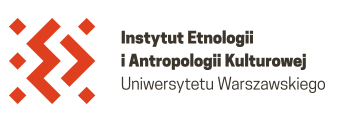Documenting the Revolution: Twitter Images during Ukraine’s Euromaidan, Andrew Asher
Zapraszamy do oglądania nagrania seminarium, które odbyło się 6.05.2015 w Instytucie Etnologii i Antropologii Kulturowej UW.
On November 21, 2013, demonstrators gathered in Maidan Nezalezhnosti (Independence Square) in Kiev, Ukraine to protest the Ukrainian government’s suspension of negotiations finalizing the European Union-Ukraine Association Agreement, participants in the protest used the Twitter hashtag “Euromaidan” (Ukrainian: #Євромайдан; Russian: #Eвромайдан; English: #Euromaidan) as a means to communicate information, coordinate actions, and provide a space for commentary and discussion. “Euromaidan” soon became a shorthand for the opposition movement, and as the protests grew, these hashtags continued to be utilized to share real-time information about unfolding events both for audiences directly involved with the protests, as well as throughout Ukraine and worldwide.
Using a mixed-methods approach that combines quantitative analytics and qualitative analysis, this paper analyzes the visual materials embedded within the Twitter data stream associated with the three Euromaidan hashtags. Given Twitter’s strict 140 character limit for individual posts, users often turn to images to expand their posts or to make a particular point or argument, as well as to provide documentary evidence of events, making these images an especially rich source for understanding the real-time processes of protest movements. However, because the analysis of images is difficult to automate, they are often omitted from discussions of Twitter’s role in these social movements. For this reason, this paper focuses its attention specifically on the production and consumption of visual images as a way more fully understanding how social media is employed during periods of social and political conflict.
Spotkanie odbyło się 6.05.2015 w ramach projektu „Antropologia dziś - otwarte seminaria naukowe” finansowanego ze środków Ministerstwa Nauki i Szkolnictwa Wyższego. Projekt jest realizowany przez Stowarzyszenie „Pracownia Etnograficzna” im. Witolda Dynowskiego we współpracy z Instytutem Etnologii i Antropologii Kulturowej UW.


